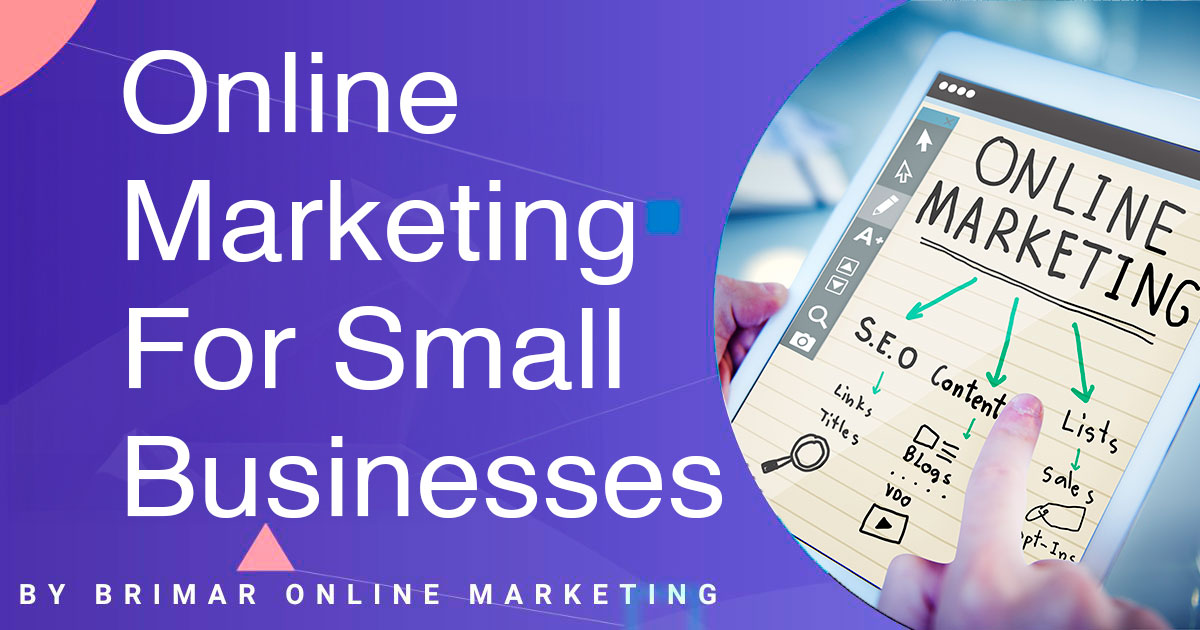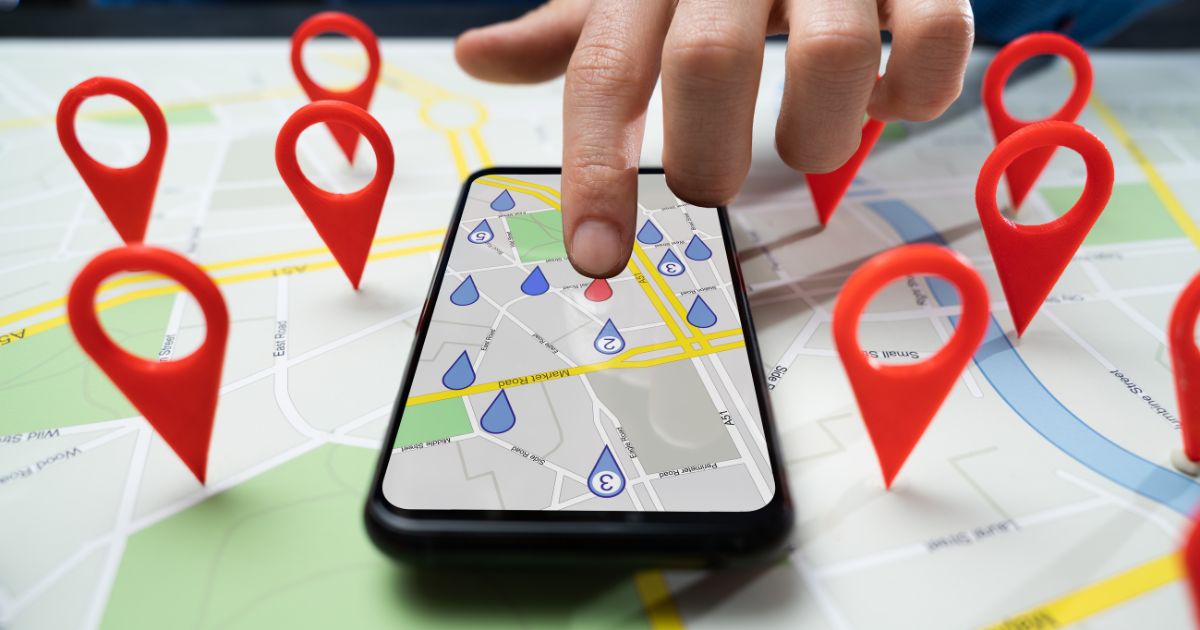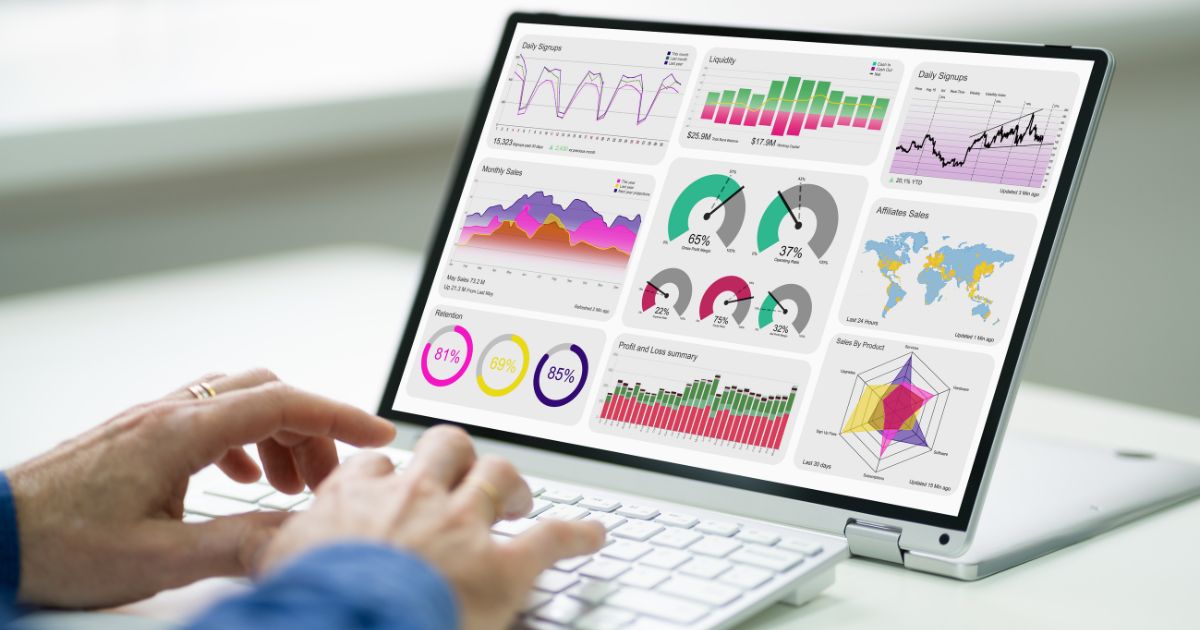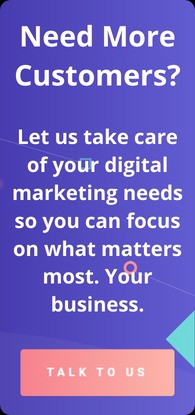
Welcome to the world of online marketing, where even the smallest businesses can make a big impact.
Why is this so important?
Because your potential customers are spending a significant amount of their time online.
By tapping into online marketing, you can increase your visibility, attract more customers, and ultimately boost your sales.
This post will guide you through effective online marketing strategies designed specifically for small businesses.
Understanding Your Audience
It’s essential to understand who your customers are, what they need, and how they behave.
This insight allows you to tailor your marketing efforts to resonate with them on a deeper level.
Importance of Knowing Your Target Market
Understanding your target market helps you create relevant content, choose the right marketing channels, and develop products or services that meet their needs.
When you know your audience, you can speak their language, address their pain points, and build a loyal customer base.
Tools and Methods to Identify Your Audience
There are several tools and methods to help you identify your target audience:
- Surveys and Questionnaires: Direct feedback from your current customers can provide valuable insights into their preferences and behaviors.
- Social Media Insights: Platforms like Facebook, Instagram, and Twitter offer analytics that reveal demographic information, engagement patterns, and more.
- Google Analytics: This tool provides data on your website visitors, including age, gender, location, and interests.
Creating Customer Personas
Once you’ve gathered data about your audience, the next step is to create customer personas.
A well-crafted persona includes:
- Demographics: Age, gender, income level, education, etc.
- Psychographics: Interests, values, lifestyle, and behaviors.
- Pain Points: Challenges and problems they face that your business can solve.
Creating detailed customer personas allows you to tailor your marketing messages and strategies to meet your audience’s needs more effectively.
This personalized approach enhances customer satisfaction and boosts the effectiveness of your marketing efforts.
Need a Sales Funnel that Converts?
Struggling to turn clicks into customers?
A high-converting sales funnel could be the missing link. We’ll help you build a simple, straightforward, and effective funnel that guides your visitors step-by-step, so they take action, not just browse.
Building a User-Friendly Website
A professional and easy-to-navigate website can make all the difference in turning visitors into loyal customers.
It showcases your brand’s credibility and makes it easy for users to find the information they need, ultimately leading to higher engagement and conversions.
Key Elements of a User-Friendly Website
- Mobile Responsiveness: With the majority of internet users accessing websites through their mobile devices, ensuring your website is mobile-friendly is crucial.
A responsive design adapts to various screen sizes, providing a seamless user experience whether someone is browsing on a smartphone, tablet, or desktop. - Fast Loading Times: Aim for a loading time of under three seconds to keep visitors engaged and reduce the likelihood of them leaving your site for a competitor’s.
- Clear Calls-to-Action (CTAs): Guide your visitors on what to do next with clear and compelling CTAs. Whether it’s “Contact Us,” “Shop Now,” or “Sign Up,” make sure your CTAs are prominently displayed and easy to find. This helps drive user actions and improves your website’s overall conversion rates.
Tips for Optimizing Website Content for SEO
- Keyword Research: Start by identifying the keywords and phrases your potential customers are searching for. Use tools like Google Keyword Planner or Ahrefs to find relevant keywords and incorporate them naturally into your website content.
- Quality Content: Search engines favor high-quality, relevant content. Create informative and engaging content that addresses your audience’s needs and questions. Regularly updating your blog or resources section can also help improve your SEO.
- Meta Tags and Descriptions: Optimize your meta titles and descriptions to include relevant keywords. This not only helps search engines understand the content of your pages but also improves the click-through rate from search engine results pages (SERPs).
- Internal Linking: Use internal links to guide visitors to other relevant pages on your website. This improves the user experience and helps search engines crawl and index your site more effectively.
- Image Optimization: Ensure your images are optimized by compressing their size for faster loading times and using descriptive, keyword-rich file names and alt tags. This can improve your site’s accessibility and SEO.
Focusing on these key elements and optimization tips helps you create a user-friendly website that attracts and retains visitors while performing well in search engine rankings.
A well-designed website is the cornerstone of successful online marketing, providing a solid foundation for all your other efforts to succeed.
Leveraging Social Media

Choosing the Right Social Media Platforms for Your Business
The key is to be where your audience is.
For instance, if your target customers are young adults, Instagram or TikTok might be ideal and LinkedIn is the place to be for a more professional audience.
Facebook remains a versatile option for many demographics, while Pinterest can be great for businesses with visually appealing products.
Do some research, and focus on 2-3 platforms where you can actively engage with your audience.
Creating Engaging Content That Resonates with Your Audience
Content is king, but engagement is queen.
Share a mix of content types: photos, videos, stories, and live sessions.
Show behind-the-scenes looks, customer testimonials, and user-generated content.
Educational posts, how-to guides, and industry news can also capture interest.
Always aim for authenticity—people connect with real stories and genuine interactions.
Tips for Consistency and Engagement
Consistency builds trust and keeps your audience engaged.
Create a posting schedule and stick to it—tools like Buffer or Hootsuite can help you manage and plan your posts.
Run polls, ask questions, and encourage user participation.
Remember, social media is a two-way street, actively listening and responding can turn followers into loyal customers.
Email Marketing
Benefits of Email Marketing for Small Businesses
Email marketing remains one of the most cost-effective ways to connect with your audience.
It allows you to deliver customized messages straight to your customers’ inboxes.
This can drive sales, build relationships, and keep your brand top-of-mind.
Plus, with high ROI, it’s a smart investment for small businesses.
Building and Segmenting Your Email List
Start by collecting emails through your website, social media, and in-store sign-ups.
Offer incentives like discounts or free resources to encourage sign-ups.
Segmenting your email list is crucial, group your subscribers based on their interests, purchase history, or demographics.
This way, you can send more relevant content that increases engagement and conversions.
Crafting Compelling Email Campaigns
Your emails should be visually appealing, easy to read, and packed with value.
Start with a catchy subject line that grabs attention.
In the email body, use a friendly and conversational tone.
Share updates, promotions, and helpful tips.
Always include a clear call-to-action (CTA) that tells readers what you want them to do next, whether it’s visiting your website, following you on social media, or making a purchase.
Local SEO
Importance of Local SEO for Small Businesses
When done right, it ensures that your business shows up in local search results, driving more foot traffic and local customers.
For small businesses, this can be a game-changer, helping you stand out against local competitors.
Optimizing Your Google My Business Profile
Make sure your profile is complete with accurate information, business name, address, phone number, and business hours.
Add high-quality photos of your business and regularly update your posts with news, offers, and events.
Encourage customers to leave reviews and respond to them promptly to show that you value their feedback.
Getting Reviews and Managing Online Reputation
Reviews build trust and influence potential customers.
Encourage satisfied customers to leave positive reviews on Google, Yelp, and other relevant platforms.
Address any issues raised in negative reviews and show that you are committed to providing a great customer experience.
Content Marketing
Role of Content in Attracting and Retaining Customers
Content marketing helps you attract new customers and keep existing ones engaged.
This builds trust and keeps your audience coming back for more, ultimately leading to increased loyalty and sales.
Types of Content to Create
Variety is key.
Blog posts can help with SEO and provide in-depth information.
Videos are highly engaging and can explain complex topics in an easy-to-digest format.
Infographics can simplify data and are highly shareable. E-books and whitepapers can position your business as an industry leader, while podcasts can reach audiences on the go.
Tips for Creating Valuable and Shareable Content
Focus on quality over quantity.
Use catchy headlines and eye-catching visuals.
Encourage sharing by adding social share buttons and engaging CTAs.
Regularly update and repurpose your best-performing content to keep it fresh and relevant.
Paid Advertising
Pay-per-click (PPC) Advertising and Social Media Ads
Paid advertising can be a game-changer for small businesses looking to boost their online presence quickly.
PPC advertising, such as Google Ads, allows you to bid on keywords relevant to your business, ensuring your ads appear at the top of search results when potential customers are looking for products or services like yours.
Similarly, social media ads on platforms like Facebook, Instagram, and LinkedIn enable you to target specific demographics, interests, and behaviors, ensuring your ads reach the right audience.
Budgeting and Targeting Tips for Small Businesses
When starting with paid advertising, it’s essential to set a realistic budget.
Begin with a small budget to test different ads and see what works best.
Focus on long-tail keywords for PPC campaigns, as they are often less competitive and cheaper, yet highly targeted.
For social media ads, take advantage of the platforms’ detailed targeting options to narrow down your audience.
This way, your ads will be shown to people most likely to be interested in your offerings, maximizing the efficiency of your ad spend.
Measuring ROI and Adjusting Campaigns
To ensure you’re getting the most out of your advertising budget, it’s crucial to track the return on investment (ROI) of your campaigns.
Use tools like Google Analytics and the insights provided by social media platforms to monitor key metrics such as click-through rates (CTR), conversion rates, and cost per acquisition (CPA).
If a particular ad isn’t performing well, don’t hesitate to tweak the copy, change the imagery, or experiment with new targeting options.
Analytics and Adjustments
Importance of Tracking and Analyzing Marketing Efforts
Tracking and analyzing your marketing efforts is essential for understanding what’s working and what isn’t.
By regularly monitoring your campaigns, you can identify successful strategies and areas that need improvement.
This ongoing process ensures you’re not wasting resources on ineffective tactics and allows you to optimize your marketing efforts continuously.
Key Metrics to Monitor
Several key metrics can provide valuable insights into your marketing performance.
Website traffic is a primary indicator of your online visibility and the effectiveness of your SEO and content marketing strategies.
Conversion rates help you understand how well your website and ads are turning visitors into customers.
Social media engagement, including likes, shares, comments, and followers, reflects the impact of your social media efforts and audience interaction.
Making Data-Driven Decisions to Improve Your Strategy
Analyzing these metrics enables you to make informed decisions to improve your marketing strategy.
For instance, if you observe a high bounce rate on a specific page, consider revising its content or design to boost engagement.
If a social media platform isn’t driving much traffic or engagement, you might want to shift your focus to a more effective one channel.
Regularly reviewing your data helps you stay agile and responsive to market changes, ensuring your marketing efforts remain relevant and effective.
Expanding Your Digital Marketing Strategy for Maximum Impact
Small business owners must embrace digital marketing strategies to stay competitive in today’s digital space.
A well-crafted marketing plan ensures that every effort contributes to business growth, brand awareness, and customer engagement.
Whether running a coffee shop, a local service business, or an e-commerce store, leveraging digital marketing tools can significantly enhance your brand visibility and revenue.
Social Media Marketing: Reaching a Broader Audience
Social media marketing is a powerful tool that allows local businesses to engage with potential customers, build relationships, and establish a strong online presence.
Many small business owners hesitate to invest in social media advertising due to concerns about their marketing budget.
Still, the good news is that platforms like Facebook, Instagram, and LinkedIn provide flexible ad options tailored to any budget.
To get the best results, consider these best practices:
- Choose the right social media channels: Not all platforms work for every business. For example, a coffee shop may find Instagram and TikTok ideal for showcasing video content, while a B2B service provider might benefit more from LinkedIn.
- Post at the right time: Utilize analytics tools to determine when your audience is most active and schedule social media posts accordingly.
- Use a content calendar: Planning ahead ensures a steady stream of high-quality content, keeping your brand visible and engaging.
- Leverage influencer marketing: Collaborating with local or niche influencers can expand your reach and establish credibility within your local area.
The Role of SEO in Driving Organic Traffic
Search engine optimization (SEO) is one of the best ways to generate organic traffic and attract the right people to your website.
A solid content marketing strategy focused on high-quality content can help small business owners appear higher in search engine results, increasing their brand visibility and customer reach.
Some SEO best practices include:
- Optimizing for local SEO: Ensure your contact information (name, address, and phone number) is consistent across all social media pages, directories, and your physical location to enhance local search rankings.
- Encouraging customer reviews: Positive customer reviews on platforms like Google and Yelp can improve credibility and local business search rankings.
- Adding QR codes to marketing materials: Placing QR codes on flyers, menus, or business cards can direct users to your website, social channels, or promotional offers, making engagement seamless.
- Regular content creation: A blog with SEO-optimized articles covering industry insights, how-to guides, and the latest trends can help establish authority in your niche.
Digital Advertising. Reaching the Right Audience with a Strategic Approach
Online advertising through pay-per-click advertising (PPC) can be a game-changer for businesses looking for quick visibility.
Google Ads and social media advertising enable small teams to target specific demographics and optimize marketing campaigns based on performance data.
Key best practices for PPC:
- Perform market research: Understanding what keywords and ad creatives attract your audience ensures higher conversion rates.
- Optimize ad copy and visuals: Video marketing performs exceptionally well on platforms like YouTube and Facebook, making it a crucial part of any digital marketing efforts.
- Monitor and adjust campaigns: Using analytics tools, track click-through rates (CTR) and conversion rates to refine strategies for best results.
Email Marketing: The Secret to Long-Term Customer Engagement
Despite the rise of social media channels, email newsletters remain among the best ways to nurture leads and maintain customer relationship management.
Building a list of email addresses allows businesses to engage directly with customers, providing them with exclusive content, promotions, and updates.
How to make email newsletters more effective:
- Personalization: Address subscribers by name and tailor content based on their preferences or past interactions.
- Segment your list: Grouping contacts based on behavior or demographics ensures relevant messaging.
- Incorporate video content: Embedding video content in emails increases engagement and click-through rates.
- Use automation: Email sequences triggered by specific actions (such as a first purchase or an abandoned cart) help keep your brand top of mind.
Leveraging Data to Improve Digital Marketing Strategies
The key to a successful digital marketing strategy lies in continuous optimization.
By using analytics tools, small business owners can gain insights into what’s working and what needs improvement.
Consider taking a closer look at:
- Social media accounts: Which platforms drive the most engagement?
- Content performance: Which blog posts, videos, or social media posts receive the highest traffic and interaction?
- Ad campaigns: What’s the ROI on your pay-per-click advertising efforts?
Analyzing data regularly helps fine-tune marketing campaigns, ensuring your business reaches the right people at the right time.
Integrating Traditional and Digital Marketing for Maximum Impact
While digital marketing is essential, combining it with traditional methods can amplify results. For example:
- Using QR codes on print ads: This bridges the gap between offline and online marketing.
- Promoting social media pages in-store: Encourage customers to follow and engage with your social media accounts.
- Incorporating local partnerships: Collaborating with other local businesses can boost brand reach and credibility.
By blending both approaches, small business owners can create a comprehensive digital marketing strategy that maximizes their business growth.
Wrapping Up
Online marketing offers small businesses a range of powerful tools to increase visibility, attract customers, and boost sales.
From understanding your audience and building a user-friendly website to leveraging social media and email marketing, each strategy plays a crucial role in your overall success.
Paid advertising can provide quick results, while ongoing analytics and adjustments ensure your efforts are continuously optimized.
Now that you’re equipped with these insights, it’s time to start implementing these strategies.
Remember, consistency and adaptability are key.
Keep experimenting, learning, and adjusting your approach to stay ahead in the competitive online marketplace.
Feeling overwhelmed or need some expert guidance?
Contact Brimar Online Marketing for personalized assistance tailored to your business needs.
Our team of experienced professionals is here to help you navigate the complexities of online marketing and achieve your business goals.
Our Digital Marketing Services Have Helped Our Clients Increase Their Revenue!
“I highly recommend Brimar if your looking to grow your online business. You will be satisfied with the high level of expertise and high quality of services. It has helped my business grow by leaps and bounds.”
CEO



